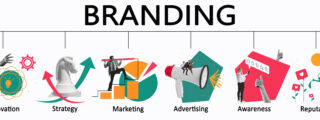
The Customer Service Quotient
Today’s consumers expect a relationship–not just product–from businesses they support. To help you enhance those relationships, here are 5 surprising stats, plus 5 savvy strategies, about customer engagement.
Tip: “Be acutely responsive to questions, comments, and complaints. Why complaints? Because customers registering complaints are often your most loyal ones.”
FIVE STATS
Here are five stats to show how challenging the relationship can be:
- The typical company loses 10-20% of its customer base every year. (Bain & Co.)
- 60-80% of “defecting” customers describe themselves as satisfied just before they leave. (Business Week)
- 84% of customers who leave do so because of poor service. 70% say the reason has nothing to do with product. (Forum Corp.)
- Most businesses only hear from 4% of dissatisfied customers. The other 96% just leave, and 91% leave for good. (Secrets of CRM, by Jim Barnes)
- It costs 5-10x more to attract a new customer than to keep an existing one. (Council on Financial Competition)
FIVE STRATEGIES
Here are some steps to take internally—and reasons to take them—in order to build the level of engagement with patients and customers.
- DIFFERENTIATION: “The winning differentiator is no longer product or price, but the level of customer engagement relative to the competition.” (The Economist)
The key, according to Kyle LaMalfa, best practices manager and loyalty expert at Allegiance, is not just creating resolutions, but designing systems and channels for responding to customers. Here are four of his suggestions.
- LOYALTY: “Be acutely responsive to customer questions, comments, and complaints. Why complaints? Because customers registering complaints are often your most loyal ones. If you resolve a complaint quickly, you can actually grow loyalty.”
- FEEDBACK: “Engagement takes your customer beyond passive loyalty to become an active participant and promoter of your products and services. Engaged customers will give you more feedback—and you should be ready to handle it.”
- METRICS: “Establish channels (electronic, phone, written) to build engagement, and encourage customers to let their voice be heard. Then create metrics to improve response to concerns (for example, ‘time to first response’ and ‘time to resolution’).”
- RESPONSE: “Listen to feedback from comment cards, letters, calls, surveys. Respond quickly and personally. Trust customers to tell you what the problem is, and analyze which action items will have the most impact on business outcomes.”
These are just some of the strategies provided in an excellent downloadable book, “ENGAGEMENT: Winning the Battle for Customer and Employee Hearts and Minds” (http://www.maritzcx.com/thank-you/?p_id=12645).
It includes papers from groups like J.D. Power & Associates about turning loyal customers into, as they put it, “billboards who tell their friends and colleagues about your business.”
Have you developed new strategies to help engage patients? What new tools have worked the best…changes with in-person engagement, online communications, or other vehicles you’ve developed? Tell us and join in the conversation on our Facebook page here.
Comments are closed.







